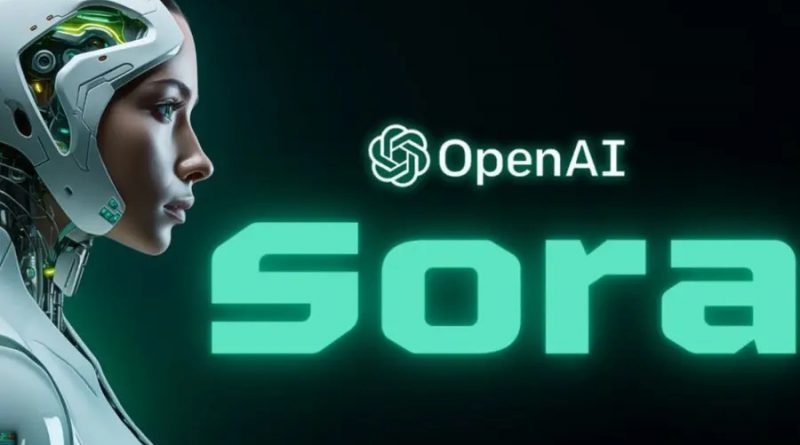OpenAI Empowers Creators with New Controls and Revenue Sharing on Sora AI Video App
Sora, initially available in the United States and Canada, allows users to create short videos — up to ten seconds — that can be shared across social media-like platforms.
OpenAI, the company behind ChatGPT, is taking a major step toward empowering creators in the fast-growing world of AI-generated video. With the launch of Sora, a standalone AI video app, OpenAI is introducing controls that allow content owners to manage how their characters and intellectual property are used, alongside a revenue-sharing model for those who permit such usage.
The announcement, made by OpenAI CEO Sam Altman, comes amid growing scrutiny over AI-generated content and its impact on copyright and intellectual property rights. Altman emphasized that content owners, including movie and television studios, will have “more granular control” over the use of their characters in AI videos, offering options to either block or allow their appearance. This new framework not only protects creators’ rights but also incentivizes participation through revenue sharing.
Sora, initially available in the United States and Canada, allows users to create short videos — up to ten seconds — that can be shared across social media-like platforms. The app has quickly gained traction, with users producing more content than OpenAI initially anticipated. Many of these videos cater to niche audiences, reflecting both the creativity and the diverse interests of users in the growing AI video space.
The new content control and monetization features are expected to address one of the key tensions in AI content creation: balancing innovation with fair compensation for rights holders. By allowing copyright owners to participate in revenue-sharing, OpenAI aims to create a collaborative ecosystem where creators can benefit financially while maintaining control over how their work is represented.
“Content owners now have the ability to dictate how their characters are used,” Altman wrote on his blog. “We will begin testing revenue-sharing models within Sora soon, with the goal of expanding consistent approaches across our broader AI product suite.”
While some studios, such as Disney, have already opted out of allowing their material on the app, others may see this as an opportunity to engage with audiences in innovative ways. The model reflects a broader trend in the tech industry: recognizing the value of intellectual property while enabling creative experimentation in AI-driven media.
OpenAI’s approach with Sora positions the company as a leader in responsible AI innovation. By combining user-generated content, monetization, and creator rights protection, Sora aims to set a new standard for ethical AI deployment in media. Analysts note that this could serve as a blueprint for other AI content platforms navigating the complex intersection of copyright, creativity, and technology.
The timing is particularly significant. AI-generated video has exploded in popularity, but many creators and rights holders have expressed concerns about how their work is used. OpenAI’s new tools aim to resolve this by giving owners direct oversight while rewarding them for participation. Early indications suggest this model could transform how studios and individual creators interact with AI technology.
In addition to creator controls and revenue sharing, Sora demonstrates OpenAI’s broader commitment to multimodal AI. Last year, the company launched a public Sora model to expand its text-to-video capabilities, competing with platforms from Meta and Google. Sora allows users to convert ideas into visual content rapidly, reflecting a shift toward accessible, high-quality AI tools for both creators and general audiences.
Industry experts praise OpenAI’s approach as both practical and forward-looking. By implementing controls and monetization options early, the company encourages rights holders to embrace AI innovation rather than resist it. This proactive stance could help alleviate tensions in Hollywood and beyond, ensuring that creators feel protected while users explore new ways of storytelling.
“The combination of control and compensation is key,” said a media technology analyst. “OpenAI is showing that AI doesn’t have to replace creators — it can empower them, giving them new avenues to connect with audiences and monetize their work.”
As Sora continues to grow, OpenAI plans to test different revenue-sharing strategies to optimize outcomes for both rights holders and users. While the framework will evolve, the guiding principle is clear: creators should benefit from the digital economy they help inspire.
OpenAI’s efforts with Sora highlight a major shift in the AI landscape: moving from experimentation to responsible, rights-aware deployment. By prioritizing creator control and compensation, OpenAI positions Sora as a positive example of how AI can enhance, rather than compromise, the creative industries.
In a rapidly changing media environment, Sora offers a win-win: creators gain oversight and monetization opportunities, users gain creative freedom, and the AI ecosystem grows responsibly. This initiative demonstrates that innovation and ethical practices can go hand-in-hand, shaping the future of content creation for years to come.



